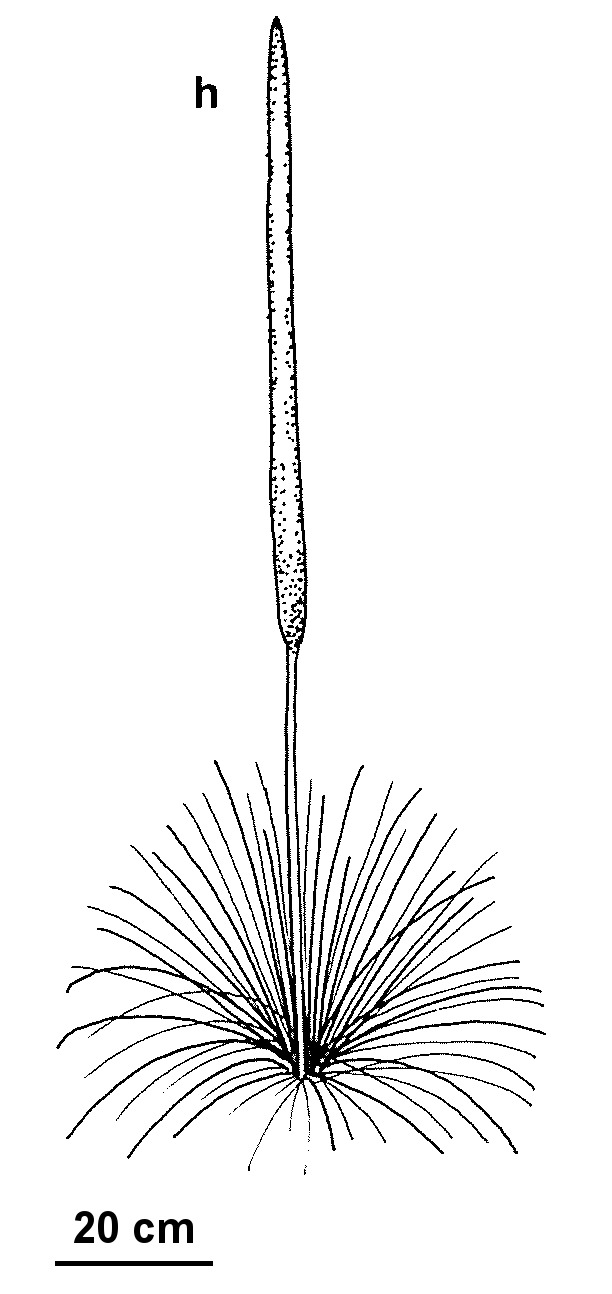Xanthorrhoea semiplana subsp. semiplana
Trunk absent or up to 1 m long. Leaves narrowly transverse-rhombic to very depressed obtriangular in cross-section, 5–12 mm wide, 2–3 mm thick, bluish, very glaucous. Inflorescence with flower-bearing part 130–200 cm long, c. 30 mm diam., 1.5–2 times as long as non-flowering axis which is 1–1.3 m long and c. 20 mm diam.; bracts around flowers obscure; bracts between flowers narrow, tapered to a fine point, glabrous. Sepals with apex ±acute; petals glabrous, except for a small hairy, adaxial projection from the apex. Flowers Dec.
LoM, Wim. Also SA. Herbarium specimens from the Big Desert near Telopea Downs have been referred to this taxon while plants collected from the Big Desert near Yanac, and the Little Desert near Nhill, may also belong. Scattered in sandy soil with mallee eucalypts and in heathland communities, also fairly common as remnants in cleared land (but see note below).
Bedford (in Bedford et al. 1986) recognizes 2 subspecies, namely subsp. semiplana and subsp. tateana, the latter being restricted to South Australia. In subspecies tateana, the spike is relatively long and stout (235–265 cm long, 40–45 mm diam.) and plants develop a distinct trunk, to 6 m long.
In the absence of inflorescences, the distinction between this and Xanthorrhoea caespitosa is difficult or impossible. Xanthorrhoea caespitosa has scapes longer than the flower spikes (the converse situation to that in X. semiplana), so some (or even all) records currently attributed to X. semiplana in Victoria may better be regarded as the more widespread X. caespitosa. The occurrence of X. semiplana in Victoria should probably be regarded as tentative pending careful field studies.
 Spinning
Spinning

